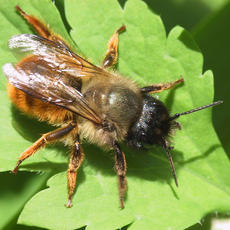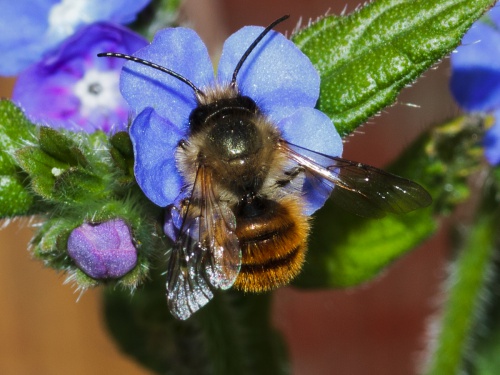Red Mason Bee - Osmia bicornis
The males are smaller than the females 6 to 11 mm. Both sexes are covered in dense gingery hairs, the male with white tufts on the head while the female's head is black.
Around suitable nesting sites.
The Red Mason Bee is active from early spring, the male being the first to appear when the weather becomes mild in March, the female emerging later. Like all bees it feeds on pollen.
It is a solitary bee, each nest being the work of a single female bee working alone. They nest in pre-existing cavities such as hollow plant stems, old garden canes, air bricks, and even old nail holes in fence posts, lining the inside of the cavity with mud.
Widespread and fairly frequent in England and Wales, less records from further north.
Fairly frequent in Leicestershire and Rutland.
Leicestershire & Rutland Map
Enter a town or village to see local records
MAP KEY:
Yellow squares = NBN records (all known data)
Coloured circles = NatureSpot records: 2020+ | 2015-2019 | pre-2015
UK Map
Species profile
- Common names
- Red Mason Bee
- Species group:
- Bees, Wasps, Ants
- Kingdom:
- Animalia
- Order:
- Hymenoptera
- Family:
- Megachilidae
- Records on NatureSpot:
- 199
- First record:
- 29/04/2003 (Gould, David)
- Last record:
- 01/05/2024 (Nicholls, David)
Total records by month
% of records within its species group
10km squares with records
The latest images and records displayed below include those awaiting verification checks so we cannot guarantee that every identification is correct. Once accepted, the record displays a green tick.
In the Latest Records section, click on the header to sort A-Z, and again to sort Z-A. Use the header boxes to filter the list.

























